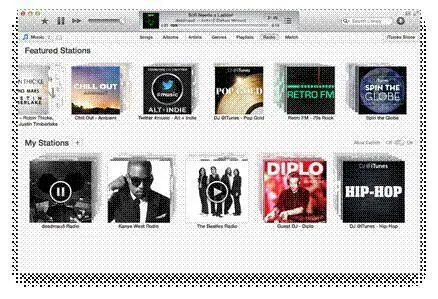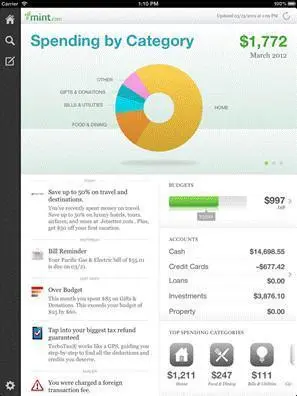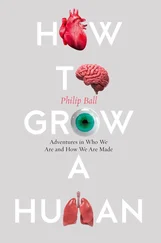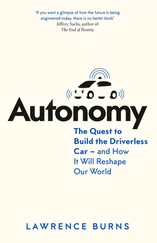Eyal, Nir - Hooked - How to Build Habit-Forming Products
Здесь есть возможность читать онлайн «Eyal, Nir - Hooked - How to Build Habit-Forming Products» весь текст электронной книги совершенно бесплатно (целиком полную версию без сокращений). В некоторых случаях можно слушать аудио, скачать через торрент в формате fb2 и присутствует краткое содержание. Год выпуска: 2014, Издательство: Nir Eyal, Жанр: Старинная литература, на английском языке. Описание произведения, (предисловие) а так же отзывы посетителей доступны на портале библиотеки ЛибКат.
- Название:Hooked: How to Build Habit-Forming Products
- Автор:
- Издательство:Nir Eyal
- Жанр:
- Год:2014
- ISBN:нет данных
- Рейтинг книги:5 / 5. Голосов: 1
-
Избранное:Добавить в избранное
- Отзывы:
-
Ваша оценка:
- 100
- 1
- 2
- 3
- 4
- 5
Hooked: How to Build Habit-Forming Products: краткое содержание, описание и аннотация
Предлагаем к чтению аннотацию, описание, краткое содержание или предисловие (зависит от того, что написал сам автор книги «Hooked: How to Build Habit-Forming Products»). Если вы не нашли необходимую информацию о книге — напишите в комментариях, мы постараемся отыскать её.
Hooked: How to Build Habit-Forming Products — читать онлайн бесплатно полную книгу (весь текст) целиком
Ниже представлен текст книги, разбитый по страницам. Система сохранения места последней прочитанной страницы, позволяет с удобством читать онлайн бесплатно книгу «Hooked: How to Build Habit-Forming Products», без необходимости каждый раз заново искать на чём Вы остановились. Поставьте закладку, и сможете в любой момент перейти на страницу, на которой закончили чтение.
Интервал:
Закладка:
By aggregating content with one service, users can do more with their music and iTunes gets better with use by learning their preferences. With users’ continued investment, more songs also become accessible on multiple Apple devices. In 2013, Apple revealed that its new iTunes Radio service would provide personalized music recommendations based on the kind of music in users’ iTunes collections. The new feature provides yet another example of how technology adapts and improves based on users’ investment.

Figure 30
Content can also be created by users of a service. For example, every status update, “Like”, photo or video shared on Facebook adds to the user’s timeline, retelling the story of one’s past experiences and relationships. As users continue to share and interact with information on the service, their digital life is recorded and archived. The collection of memories and experiences, in aggregate, becomes more valuable over time and the service becomes harder to leave as users’ personal investment in the site grows.
Data
Information generated, collected or created by users — such as songs, photos, or news clippings — are examples of stored value in the form of content. But sometimes users invest in a service by either actively or passively adding data about themselves or their behaviors.
On LinkedIn, the user’s online resume embodies the concept of data as stored value. Every time job-seekers use the service, they are prompted to add more information. The company found that the more information users invested in the site, the more committed they became to it. As Josh Elman, an early Senior Product Manager at the company told me, “If we could get users to enter just a little information, they were much more likely to return.” The tiny bit of effort associated with providing more user data created a powerful hook to bring people back to the service.
Mint.com is an online personal finance tool used by millions of Americans. The service aggregates all of the user’s accounts in one place, providing a complete picture of their financial life — but only if they invest their time and data in the service. Mint provides multiple opportunities for users to customize the site and make it more valuable with use. For example, the act of linking accounts, categorizing transactions, or creating a budget are all forms of investment. The more data collected, the more the service’s stored value increases (figure 31).

Figure 31
Followers
On the morning of Twitter’s IPO on November 7, 2013, a news commentator on Bloomberg’s television channel said “the technology needed to build the company could be built in a day.” [cvii]In fact, he was right. Twitter is a simple application. With a bit of basic programming know-how, anyone can build their very own clone of the multi-billion dollar social media behemoth.
In fact, several companies have tried to supplant the popular social network. One of the most notable attempts came from a disgruntled developer who decided to build App.net, an ad-free alternative that many tech industry watchers argue is actually a better product. But like other attempts to copy the service, App.net has not taken off. Why not?
Collecting people to follow on Twitter, as well as collecting followers, provides tremendous value and is a key driver of what keeps Twitter users hooked (figure 32 ) .

Figure 32
From the follower side of the equation, the more Twitter users curate the list of people they follow, the better the service will be at delivering interesting content. Investing in following the right people increases the value of the product by displaying more relevant and interesting content in each user’s Twitter feed. It also tells Twitter a lot about its users, which in turn improves the service overall.
For the tweeter seeking followers, the more followers one has, the more valuable the service becomes as well. Content creators on Twitter seek to reach as large an audience as possible. The only way to legitimately acquire new followers is to send tweets others think are interesting enough to warrant following the sender. Therefore, to acquire more followers, content creators must invest in producing more — and better — tweets. The cycle increases the value of the service for both sides the more the service is used. For many users, switching services means abandoning years of investment and starting over. No one wants to rebuild a loyal following they have worked hard to acquire and nurture.
Reputation
Reputation is a form of stored value users can literally take to the bank. On online marketplaces such as eBay, TaskRabbit, Yelp, and Airbnb, people with negative scores are treated very differently from those with good reputations. It can often be the deciding factor in what price a seller gets for an item on eBay, who is selected for a TaskRabbit job, which restaurants appear at the top of Yelp search results, and the price of a room rental on Airbnb.
On eBay, both buyers and sellers take their reputations very seriously. The e-commerce giant surfaces user-generated quality scores for every buyer and seller, and awards its most active users with badges to symbolize their trustworthiness. Businesses with bad reputations find it difficult, if not impossible, to compete against highly-rated sellers. Reputation is a form of stored value that increases the likelihood of using a service. Whether a buyer or seller, reputation makes users more likely to stick with whichever service they have invested their efforts in to maintain a high quality score (figure 33).

Figure 33
Skill
Investing time and effort into learning to use a product is a form of investment and stored value. Once a user has acquired a skill, using the service becomes easier and moves them to the right on the Ability axis of the Fogg Behavior Model we discussed in chapter three. As Fogg describes it, non-routine is a factor of simplicity, and the more familiar a behavior is, the more likely the user is to do it.
For example, Adobe Photoshop is the most widely-used professional graphics editing program in the world. The software provides hundreds of advanced features for creating and manipulating images. At first, learning the program is difficult, but as users become more familiar with the product — often investing hours watching tutorials and reading how-to guides — their expertise and efficiency using the product improves. They also achieve a sense of mastery (rewards of the self). Unfortunately for the design professional, most of these learnings do not translate to competing applications. Once users have invested the effort to acquire a skill, they are less likely to switch to a competing product.
***
Like every phase in the Hook Model, the Investment Phase requires careful use. It is not a carte blanche tool for asking users to do onerous tasks. In fact, quite the opposite. Just as in the Action Phase described in chapter three, to achieve the intended behavior in the Investment Phase, the product designer must consider whether users have sufficient motivation and ability to engage in the intended behavior. If users are not doing what the designer intended in the Investment Phase, the designer may be asking them to do too much. I recommend that you progressively stage the investment you want from users into small chunks of work, starting with small, easy tasks and building up to harder tasks during successive cycles through the Hook Model.
Читать дальшеИнтервал:
Закладка:
Похожие книги на «Hooked: How to Build Habit-Forming Products»
Представляем Вашему вниманию похожие книги на «Hooked: How to Build Habit-Forming Products» списком для выбора. Мы отобрали схожую по названию и смыслу литературу в надежде предоставить читателям больше вариантов отыскать новые, интересные, ещё непрочитанные произведения.
Обсуждение, отзывы о книге «Hooked: How to Build Habit-Forming Products» и просто собственные мнения читателей. Оставьте ваши комментарии, напишите, что Вы думаете о произведении, его смысле или главных героях. Укажите что конкретно понравилось, а что нет, и почему Вы так считаете.












